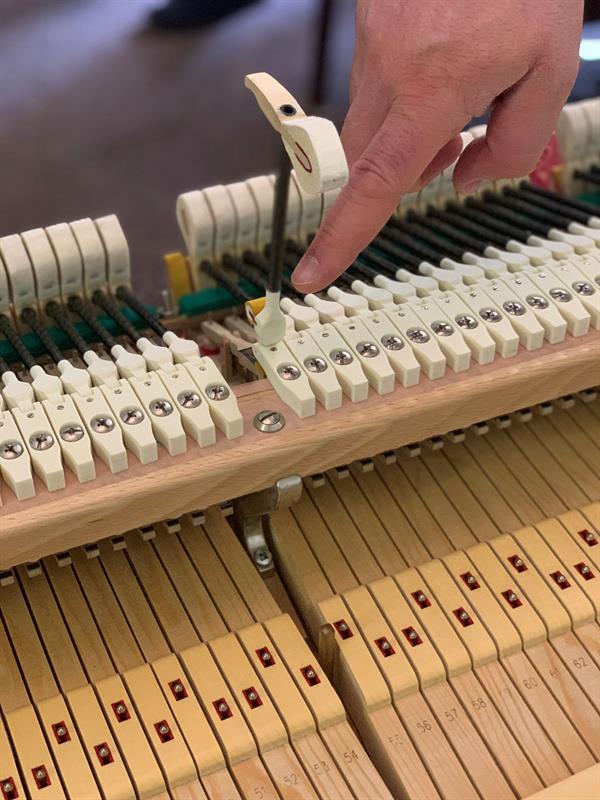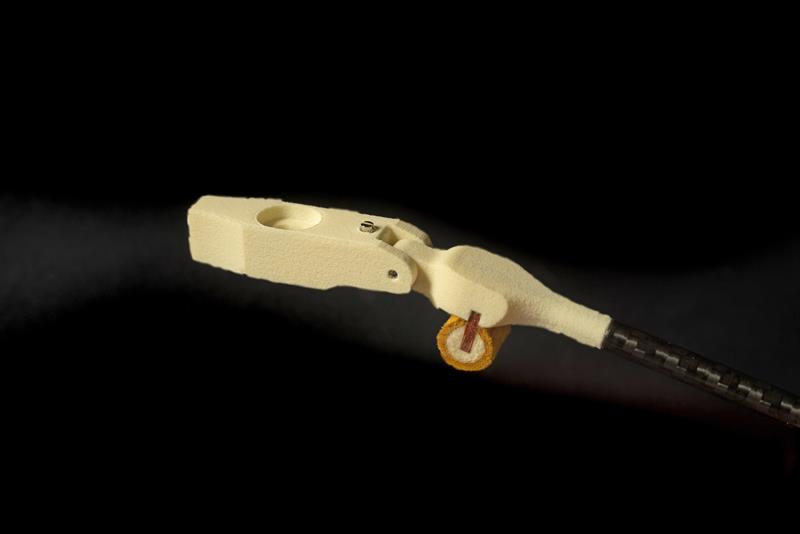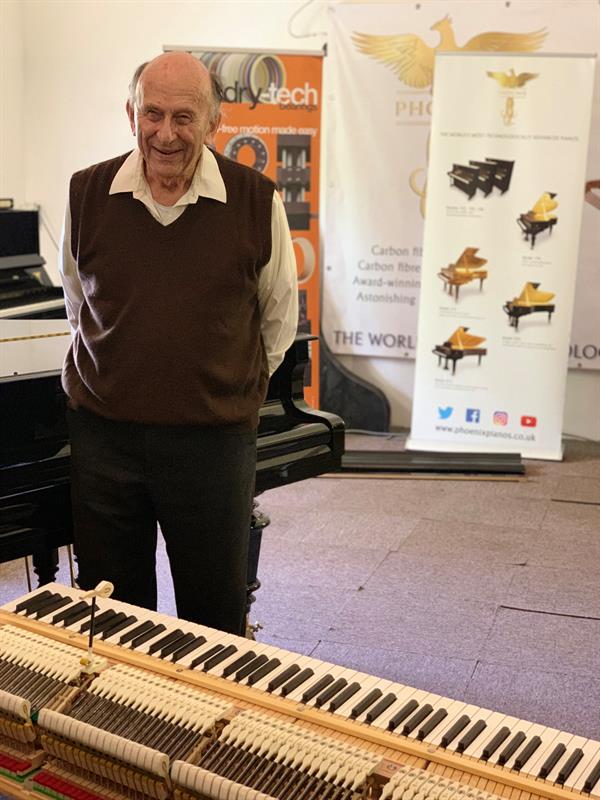This was the culmination of an explosion of ideas within the piano industry throughout the 19th Century. Reciprocity between piano builders, composers, pianists, patrons and audiences propelled enormous rates of innovation in both instruments and composition and a variety of design concepts became available, each offering something unique to the world of music.
By the late 19th century, however, piano building had largely converged on a design paradigm that was to persist throughout the 20th century, amidst an atmosphere of increasing reluctance to explore new design concepts. Piano makers shifted their focus towards branding, value engineering and marketing, whilst innovation, if any, was skewed towards finding cheaper solutions for mass production.
In the absence of improved piano sound, which for 150 years had driven experiment with new styles, came stagnation in composing classical music. New genres of composition followed the same trend of stagnation, so much so that by the middle of the 20th century the future of classical piano came into question for lack of innovative interest.
In such an environment it requires a maverick to decide to swim against the tide. Such a man is Richard Dain, the polymath founder of Kent-based Phoenix Pianos. His mission since founding the company has been to recapture the innovative drive of the 19th century piano builders, specifically in challenging the numerous now-outmoded design limitations found in traditional instruments. Or, as he rather more succinctly puts it: “It seemed to me that after 150 years, it was time to improve the technology.”

Dain was remarkably well-placed to do this, being both an accomplished amateur pianist and an engineer with a highly impressive history that began as part of a team that had worked with Sir Frank Whittle to develop the UK jet engine; forming an engineering consultancy with Sir Hugh Ford; simultaneously establishing Powdrex, a global powdered steel supplier; overseeing the development of the IC 225 locomotive and developing solvent extraction of copper from lean ores and wastes, for commercial application. This process now produces over a third of the world’s copper supply.
Thus, his ‘retirement’ has simply been a case of having more time to work on what matters to him most: the development of the acoustic piano.
True to its mission, Phoenix has produced a series of ground-breaking innovations over the last 15 years, such as ultra-thin carbon fibre and Kevlar soundboards, a new bridge concept that transfers sound energy from the string to the soundboard with almost doubled efficiency and use of modern materials to achieve climate-resistant features. These developments have been accompanied by pioneer application of finite element analysis (FEA) to whole piano structures using some of the UK’s most powerful computers. This enables the acoustic consequences of changes to be quantified and thus optimised without the huge cost of building instruments to evaluate each idea.
A conventional wooden soundboard is generally between 6mm and 9mm. Dain says: “We got a computer programme that analysed the stiffness and response of the soundboard. It [the FEA] cost a fortune!”
This process showed that the outstanding parameter in offering more natural frequencies was the thickness of the soundboard. This led Phoenix to experiment with carbon fibre soundboards.Says Dain: “We got the soundboard down to a thickness of less than 1mm and we got some wonderful sound frequencies.” The eventual thickness that was settled on, however, was 1.25mm.
Other innovations have included the development of a carbon fibre frame for a piano, which reduces the weight hugely. This has been built and is in the company’s workshop but is not yet commercially available. However, it was demonstrated as being remarkably easy to lift.
The Kevlar soundboard has already been installed. According to Dain it “sounds closer to a wooden soundboard – but is much cheaper”.

The most recent major technological development from the company, however, came when Dain turned his attention to improving the inherent limitations of the traditional hammer assembly. A piano’s hammer assembly comprises a ‘hammer flange’ - the part that is fixed in place within the overall action – a hinged shank – which defines the flightpath of the hammer - and the hammer itself. The flange, shank and hinge are traditionally made from hornbeam, a type of hardwood that when well finished is very smooth and often compared to ivory.
Although relatively strong, hornbeam is prone to changes in temperature and humidity, like all other woods. It is also difficult to produce with consistent material properties: no two pieces are quite the same. Over time shanks can warp and drift and require regulation adjustments if a piano is to respond uniformly, predictably and with even sound.
No matter how good the regulation of a traditional wooden hammer assembly, the shanks, which are typically about 6mm in diameter and 13cm in length, flex considerably when under the duress of energetic playing. The hammer wobbles from side to side, and twists chaotically as it is accelerated towards the strings, causing irregular strikes.
This chaos gives rise to unpleasant overtones, when the hammer does not contact the strings with precision.
The entire system in a traditional wooden assembly suffers from inefficiency due to flexing of the hammer shank. By way of remedy, Phoenix chose a complex-weave carbon fibre shank to replace hornbeam. This material is superbly strong and uniform, offering superior, climate-resistant performance throughout the registers of a piano. Such advantages come with no increase in weight.
The hinged hammer flange is also traditionally made of wood. Phoenix considered a range of materials to replace the flange, with one very specific aim in mind: to create a ‘bushless’ hinge assembly. Traditional bushes are made from cylindrical felt inserts, that provide an interface between metal journals (called centre pins) and the wooden parts. They must provide enough “snugness” for the hammer not to wobble from side to side, but must also be sufficiently free from friction for the system not to feel stiff. High friction from a tight bearing will feel like ‘sluggishness’ to a pianist and is another form of energy loss.
When a new hammer flange is correctly bushed, it is by definition already at a critical point with tiny margins of error. As wear inevitably takes its toll on the bushing, looseness afflicts the system, causing a loss of fine control over the path of hammer flight, whilst noises and clicks are prone to develop as the pin rattles against the bushing. Swelling of felt in periods of high humidity cause stiffness and even seizure.

It is worth noting that a piano soundboard is a giant amplifier. Any noises – no matter how apparently inoffensive in isolation – can become a real nuisance to a sensitive artist, and even more so to a recording engineer. igus, with its unique tribopolymer material, has enabled Phoenix to develop a bushless action. Called the D3D Hammer System, it offers all the advantages of a traditional system in prime condition, as well as climate resistance and, what designers at Phoenix confidently predict, an enormous longevity.
“Indeed, we even expect these assemblies may well exceed the lifespan of the piano itself,” says Dain. “We use 2mm roller bearings as centre pins for our bushless system. These ultra-high-grade pins offer buttery-smooth operation, and with approximately a 30% increased diameter, are stronger, smoother and more dimensionally precise than traditional wire centre pins. igus was of the utmost help to us in their selection and provision of material for our hammer flange assemblies.”
Already formulated for industrial bearing applications, the tribopolymer material is perfect for this application in terms of performance, whilst boasting fine aesthetics. Its ivory-white colour perfectly complements the carbon fibre shanks, and black inner felt Abel hammers. Tuning technicians appreciate the cream colour, which is easy to see in the confined space of a piano action.
“From building our prototypes we have been able to ream the igus material with relative ease, ensuring a perfect fit for our centre pins,” adds Phoenix’s James Bacon, who advised on and built the prototype. “Our test piano, which is fitted with a prototype of D3D Hammer System, offers a fabulous sense of control and immediacy, and superbly controlled hammer flight. Pianists report that D3D is ‘like stepping into a Ferrari after driving an Austin Seven’.”
Once acclimatised, pianists find that they can produce more power with less effort, and that they have a sense of connection with the piano that they have never experienced before. “All of us on the Phoenix team are confident that we have not only remedied the age-old limitations with hammer assemblies, but that we have produced a world-beating system without parallel, that is a joy for pianists to use,” enthuses Richard Dain.
This was borne out by Anton Lyakhovsky, a leading Russian concert pianist, who demonstrated the piano featuring the new hammer system and said: “At first it’s strange because the keys feel so responsive, but once you’ve adjusted to that, the sound and the consistency of the sound are fantastic.”
Richard Dain – Renaissance Man Richard Dain is a man of impressive engineering pedigree and has a distinguished family history. His grandfather engineered the public water supply to Derby; the eldest of his uncles was a Deputy Viceroy of India; the younger uncle was responsible for the building of the Calcutta tramways. After graduating from Cambridge, his first post was at Ruston & Hornsby in Lincolnshire, as part of a team who had worked with Sir Frank Whittle to develop the UK jet engine. He went on to form an engineering consultancy with Sir Hugh Ford, simultaneously establishing Powdrex, a global powdered steel supplier. Today, despite being officially ‘retired’ and 92 years of age, he runs Phoenix Pianos and has a successful business producing Kentish Cobnut Oil. His work has been in development of:
|












